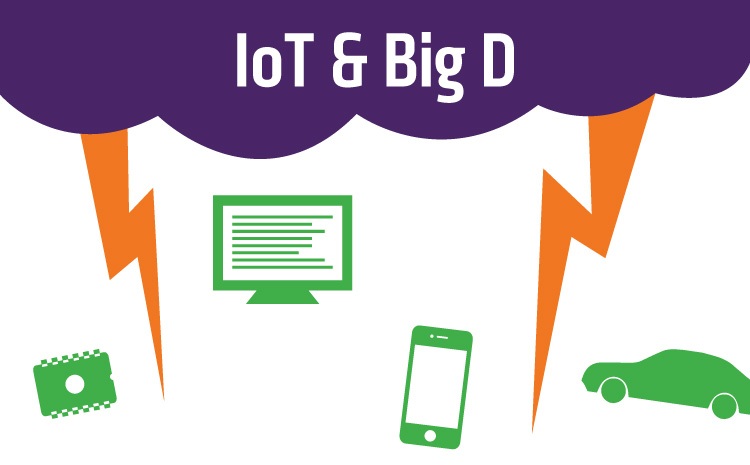
Since this is my first blog post at SEP I should probably explain the title of my blog “Another Cloud Joke and the Internet of What?”. I have been working with cloud technologies for 5 years now and telematics and connectivity for over 20 years. As a Cloud Architect I have heard every type of joke about this title that you can imagine: “Hey Brad are you going to make it rain today?” or my personal favorite “Don’t make Brad angry or he will make lightning strike!”. So, as a throwback to all those words of wisdom and the constantly changing terminology in this area, I have titled my blog accordingly. Enjoy…
During the past 20 years the names of these technologies have changed, but the premise remains the same: connect to devices, gather data or deliver data, analyze, and react. With all the hype today about IoT (Internet of Things) I thought it might be a good first blog post to look at: How Big is IoT?
According to Gartner estimates, IoT product and service suppliers will generate incremental revenue exceeding $300 billion in 2020. IDC forecasts (International Data Corporation) states that the worldwide market for IoT solutions will grow from $1.9 trillion in 2013 to $7.1 trillion in 2020.
This forecast corresponds to a predicted number of connected devices of between 40 billion (ABI-Allied Business Intelligence Research) and 50 billion (Cisco). As more and more devices begin autonomously sending and receiving data, the sheer volume of data in the world is forecast to grow ten-fold by 2020 (IDC), from about 4.4 zettabytes to 44 zettabytes. The amount of information produced solely by IoT devices will account for about 10% of all data. 4
So what constitutes a device? There are generally two main categories with supporting verticals underneath each. The two main categories are Consumer and Enterprise-Business. Basically, how we apply IoT to our personal lives and how businesses apply IoT to run more efficiently, gain market, create new opportunities, be more secure, etc…
As you can imagine, everyone has their own take on this breakdown, but this graphic captures the essence of the IoT verticals per category:


One area of fast growth in IoT and Big Data is automotive/transportation. It is estimated that the auto industry will become the second-largest generator of data in 2015.¹ This estimate is not surprising, considering that today’s plug-in hybrid vehicles generate 25 GB of data in just one hour.² For example, just the 2014 sales of the Ford Fusion Energi would generate 4.05 PB/hour.
Data drastically increases for self-driving cars. These produce near 1GB of data per second. On average this vehicle would create about 2 petabytes of data a year, according to Mark van Rijmenam founder of BigData-Startups.com. This is based on a calculation of driving 600 hours per year. 3 If you take this number and apply it to the 16.5Million / year sales in the US that is 33 ZB each year in only “new car” data generation.
According to Acquity Group (Accenture Interactive), more than two thirds of consumers plan to buy connected technology for their homes by 2019, and nearly half say the same for wearable technology. 5
Now, take a moment and go back up and look at the Consumer and Enterprise-Business category graphic again. I have only highlighted three categories for IoT and Big Data (Consumer: Home, Wearables, and Transportation). That being said, the growth in Big Data and IoT over the next 5-10 years will be significant.
The good thing is there are many platform level tools from cloud and big data providers (Amazon, Azure, Cloudera, and Hortonworks) that will enable software developers to connect devices and make intelligible insight from these massive amounts of data. Embedded chip manufacturers (ARM, Qualcomm, etc…) are also releasing system on a chip devices that will enable secure connectivity and more “standards based” low level device management. One last item is the awareness and support for data science is on the rise too because big data without data analytics and insight is basically useless.
To draw this thought process to closure, keep these things in mind to be successful in this area moving forward:
- Remember the end game goal of why you are connecting these devices; what are you trying to learn, accomplish, enhance…
- Don’t reinvent platform level tools; leverage the good work of the big dogs in the sky
- Focus on round trip security. Don’t build a platform that lands you on the news one day for a breach. Think about security from the device all the way up to the big data store and back down again.
- Learn how to make user interfaces that end customers care about. Think “How can user type x gain insight from this complex IoT-Big Data system I worked so diligently to build? ”.
In future blogs I will dig in to some of these technologies with practical use cases and reference architectures, but for now just sit back and be enamored by all the glorious things that will be reporting out and connecting every aspect of your life (said a bit sarcastically).
Sources:
- McKinsey Global Institute. “Big data: The next frontier for innovation, competition, and productivity.” June, 2011.
- Gardner, Dana. “Ford scours for more big data to bolster quality, improve manufacturing, streamline processes.” BriefingsDirect on ZDNet.com
- https://www.computerworld.com/article/2484219/emerging-technology/self-driving-cars-could-create-1gb-of-data-a-second.html
- https://www.oesa.org/Doc-Vault/Knowledge-Center/Operational-Performance-Content/IBM-Big-Data-for-Auto-Industry.pdf
- https://www.forbes.com/sites/gilpress/2014/08/22/internet-of-things-by-the-numbers-market-estimates-and-forecasts/
- https://www.acquitygroup.com/news-and-ideas/thought-leadership/article/detail/acquity-group-2014-internet-of-things-study